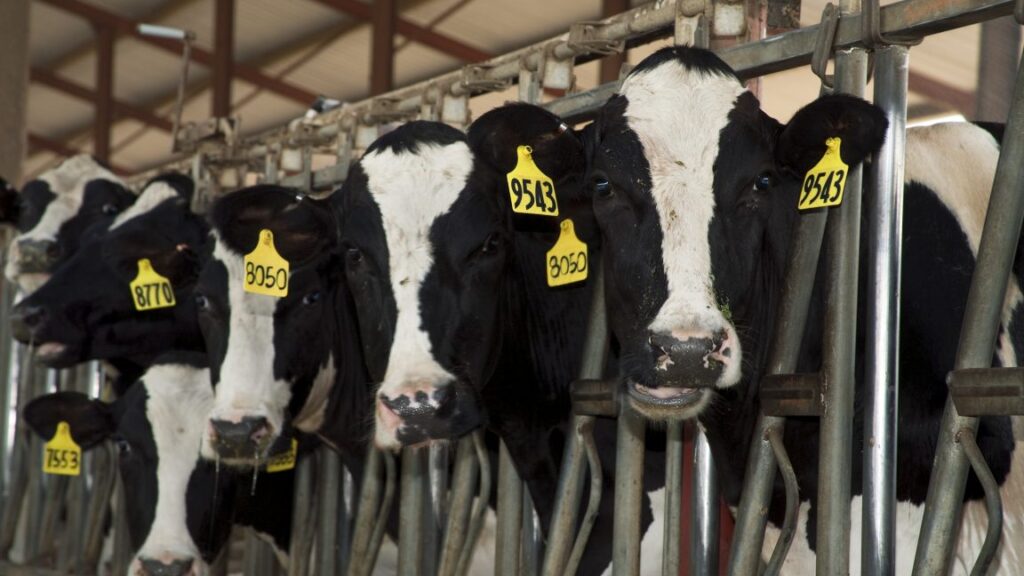
Rankin pointed to an analysis that looked at 39 different viral outbreaks in birds from 1959 to 2015, where a low pathogenic avian influenza became a highly pathogenic one. Out of those, 37 were associated with commercial poultry operations. “So it’s a very clear relationship between the increasing pathogenicity of this virus and its relationship with industrial animal raising,” Rankin said.
Some researchers worry that large farms with multiple species are providing the optimal conditions for more species-to-species transfer. In North Carolina, the second-largest hog-producing state after Iowa, some farmers have started raising both chickens and hogs under contracts that require huge numbers of animals.
“So you’ve got co-location at a pretty substantial scale of herd size, on a single property,” said Chris Heaney, an associate professor of environmental health, engineering, epidemiology, and international health at the Bloomberg School of Public Health. “Another concern is seeing it jump into swine. That host, in particular, is uniquely well suited for those influenza viruses to re-assort and acquire properties that are very beneficial for taking up residence in humans.”
In late October, the USDA reported the first case of bird flu in a pig that lived on a small poultry and hog farm in Oregon.
Farmworker advocates say the number of cases in humans is likely underreported, largely because the immigrant and non-English speaking workforce on farms could be reluctant to seek help or may not be informed about taking precautions.
“What we’re dealing with is the lack of information from the top to the workers,” said Ana Schultz, a director with Project Protect Food Systems Workers.
In northern Colorado, home to dozens of large dairies, Schultz started to ask dairy workers in May if they were getting protective gear and whether anyone was falling ill. Many workers told her they were feeling flu-ish but didn’t go to the doctor for fear of losing a day of work or getting fired.
“I feel like there’s a lot more avian flu incidents, but no one knows about it because they don’t go to the doctor and they don’t get tested,” Schultz said. “In all the months that we’ve been doing outreach and taking protective gear and flyers, we haven’t had one single person tell us they’ve been to the doctor.”
This story originally appeared on Inside Climate News.
Georgina Gustin covers agriculture for Inside Climate News and has reported on the intersections of farming, food systems, and the environment for much of her journalism career. Her work has won numerous awards, including the John B. Oakes Award for Distinguished Environmental Journalism, and she was twice named the Glenn Cunningham Agricultural Journalist of the Year, once with ICN colleagues. She has worked as a reporter for The Day in New London, Conn., the St. Louis Post-Dispatch and CQ Roll Call, and her stories have appeared in The New York Times, Washington Post, and National Geographic’s The Plate, among others. She is a graduate of the Columbia University Graduate School of Journalism and the University of Colorado at Boulder.